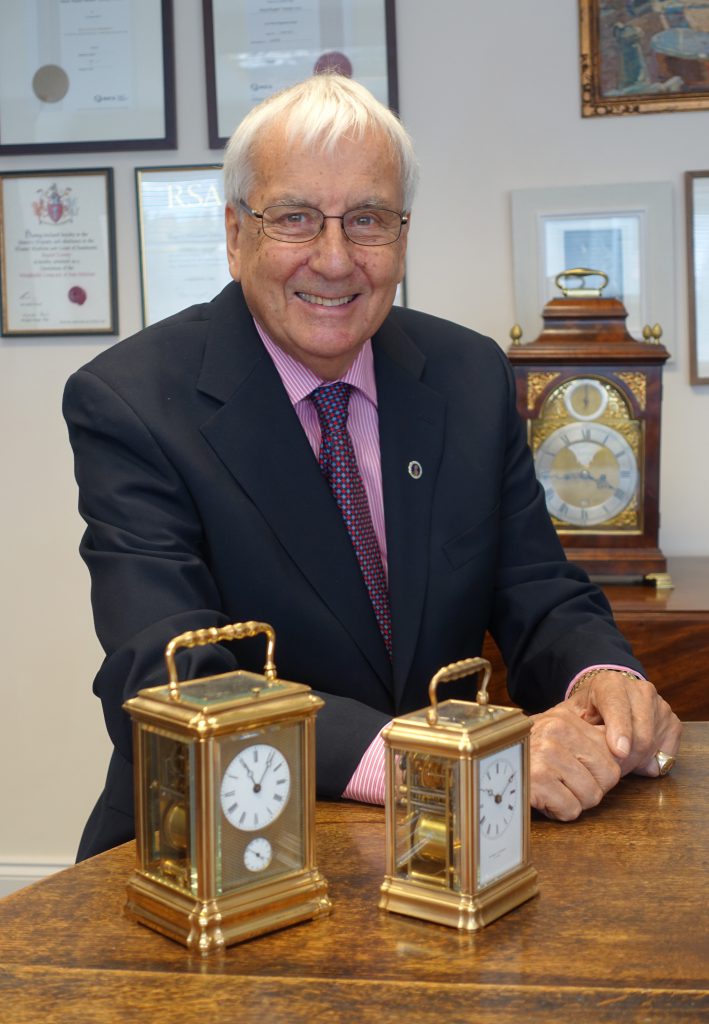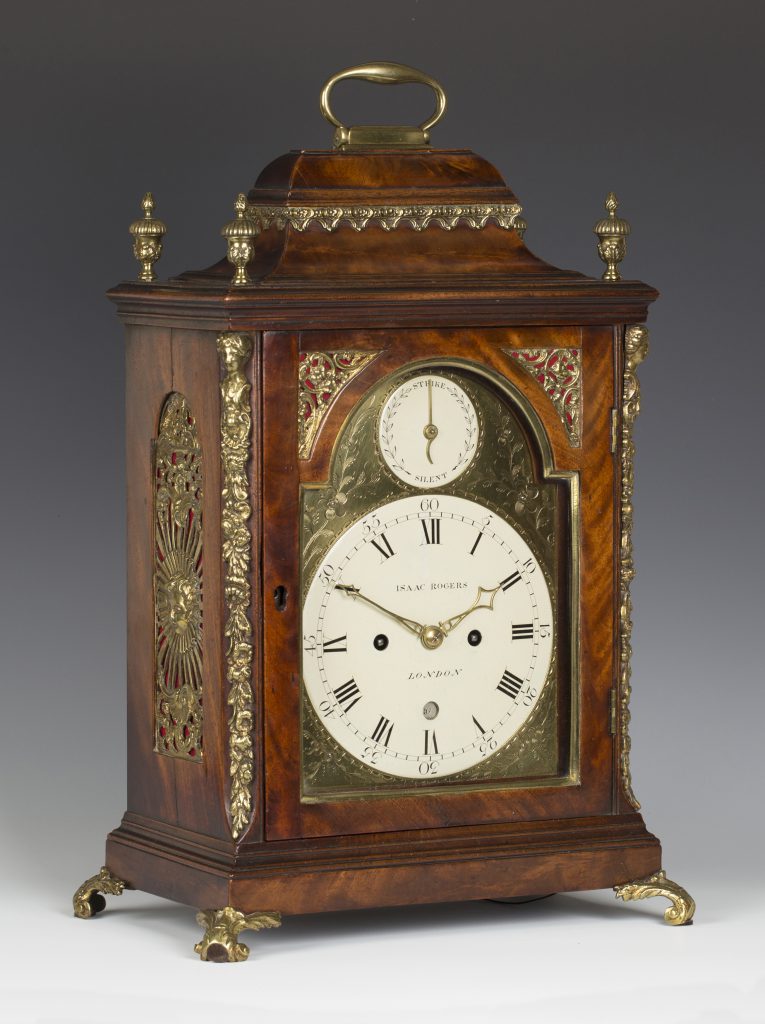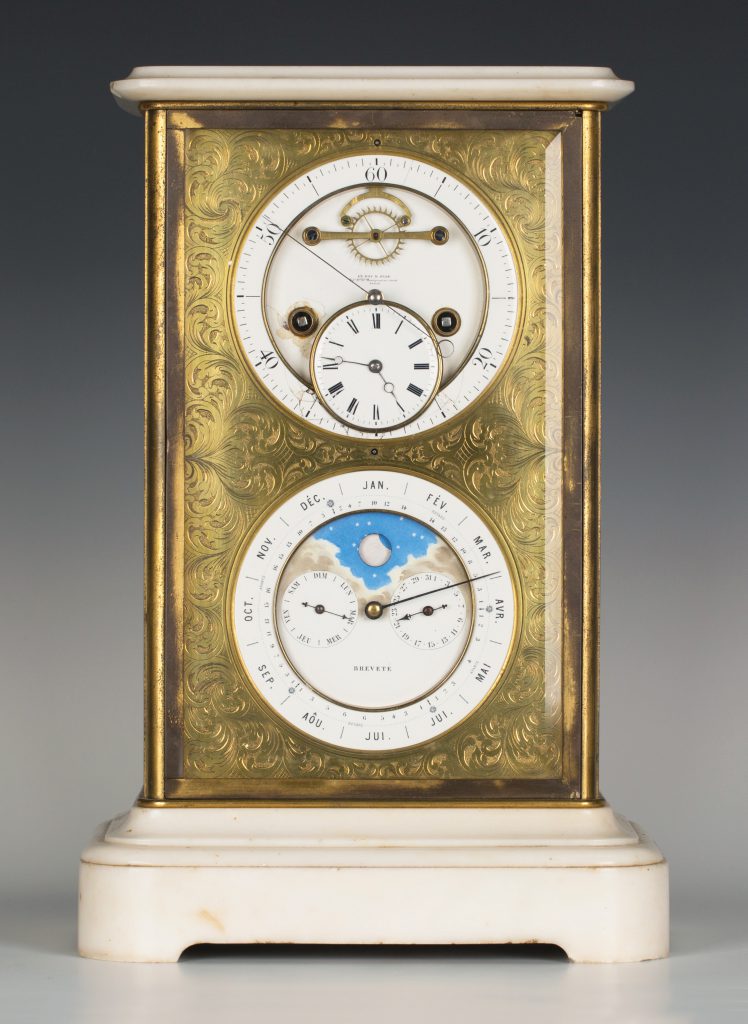
The start of a New Year seems a good moment to consider time and how we have measured it over the centuries. This week I am in the company of Brian Baskerville a highly regarded antiquarian, clock specialist and horologist.
When you first meet Brian Baskerville it quickly becomes apparent that you are with an exceptionally talented specialist.
Brian started his business in 1969 in the King’s Road, Chelsea, before moving to Kensington Church Street in 1980 and eventually to Petworth in 1987. He says “I have spent most of my career as a horologist working in the field of fine clocks. Horology refers to the art and science of making, servicing, repairing and restoring timepieces and measuring devices. Today’s watch and clockmakers need to combine the traditional, practical, dextrous specialist skills and techniques with an ability to embrace new technology.”
As an active member of The British Antique Dealers Association Brian served on the Main Council and its Cultural and Educational Trust. A Liveryman and former steward of The Worshipful Company of Clockmakers he also worked on the Main Council and Publications Committee of The Antiquarian Horological Society.
Highly respected by his peers and collectors of fine clocks Brian remains passionate about promoting his specialism and emerging talent. This is apparent in the work that he did at West Dean College over some twenty-five years. Brian explains “I served as Chairman of the West Dean College Horological Conservation Course Advisory Board. I also acted as the administrator for the St. Roche’s Educational Trust which was specifically founded to support education in the conservation and restoration of antique horological items.”
Brian Baskerville is very generous with his knowledge and continues to invest in the future of horology. For a number of years now he has acted as Toovey’s clock consultant working closely with Tom Rowsell.
Brian delights in these scientific instruments crafted to mark and measure time. It is always a pleasure to listen to him as he examines a clock. Our conversation turns to two clocks sold in 2017 at Toovey’s specialist clock auctions.

The first, a George III brass mounted mahogany bracket clock by the London maker Isaac Rogers, had an eight day twin fusee, rack striking movement with verge escapement. Brian explains that the clock’s Dutch striking on two bells with pull-repeat mechanism is a rare feature. He comments “Dutch striking is where the clock strikes the hours at the preceding half hour on a high toned bell and at the hour in a low toned bell.” It realised £3600.

I remind Brian of the late 19th century French lacquered brass and white marble four glass table clock Toovey’s sold for £4200 by Le Roy & Fils of Paris. Brian says “Le Roy & Fils was a French watchmaker. The company was founded in 1785 by Basile Charles le Roy and remained one of France’s leading makers. The quality of its eight day movement striking on a bell with perpetual calendar and moonphase was matched by the three piece white enamel dial with Roman numerals and visible Brocot escapement. Although there were some problems around condition the clock’s quality made it very appealing.”
If you are looking to acquire or sell a fine clock Brian Baskerville is always pleased to share his expertise and advise you. He can be contacted at Toovey’s Auctioneers.
An antique clock is the perfect way to measure and mark time and the market for fine clocks remains buoyant.
By Rupert Toovey, a senior director of Toovey’s, the leading fine art auction house in West Sussex, based on the A24 at Washington. Originally published in the West Sussex Gazette.